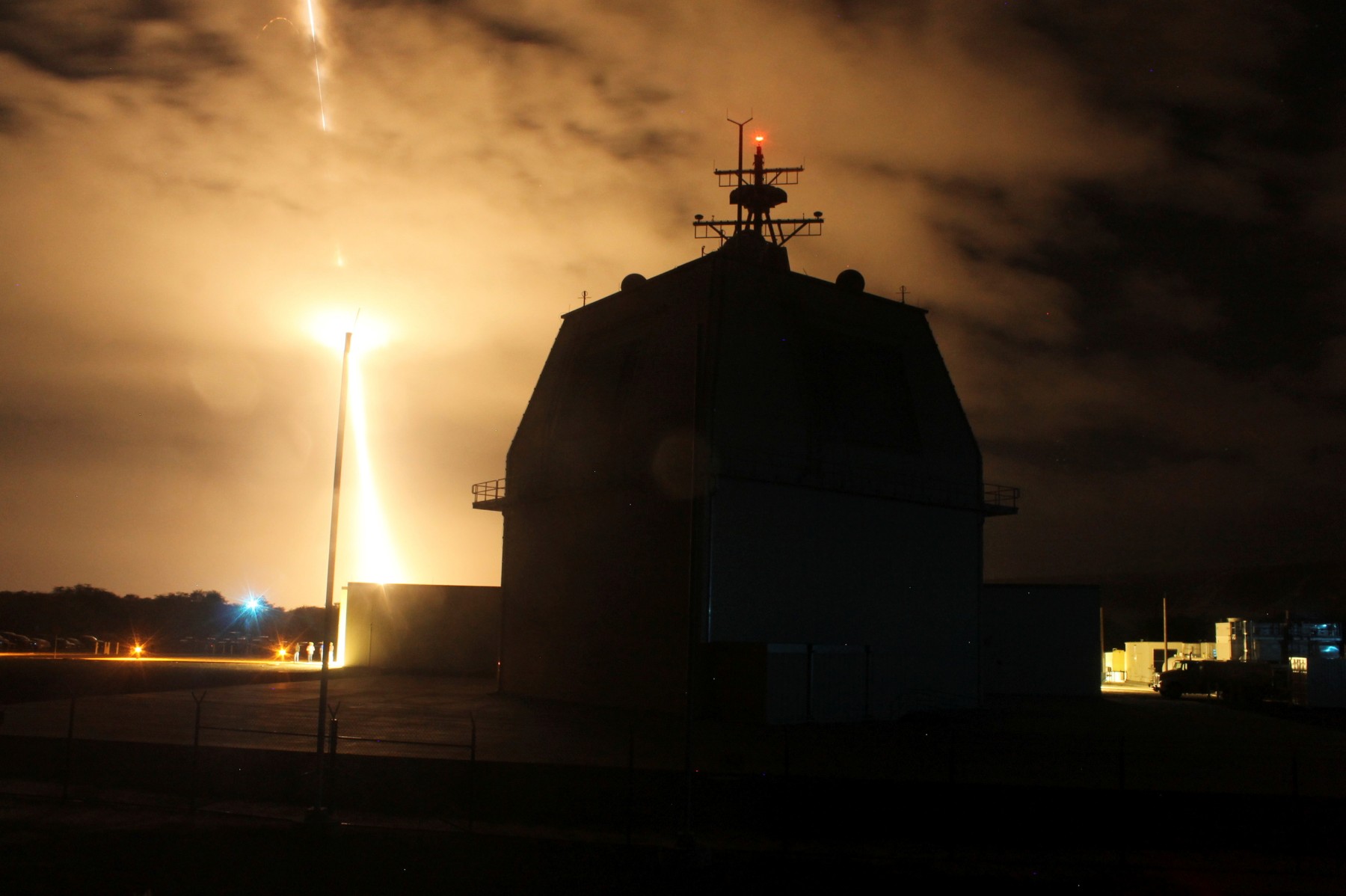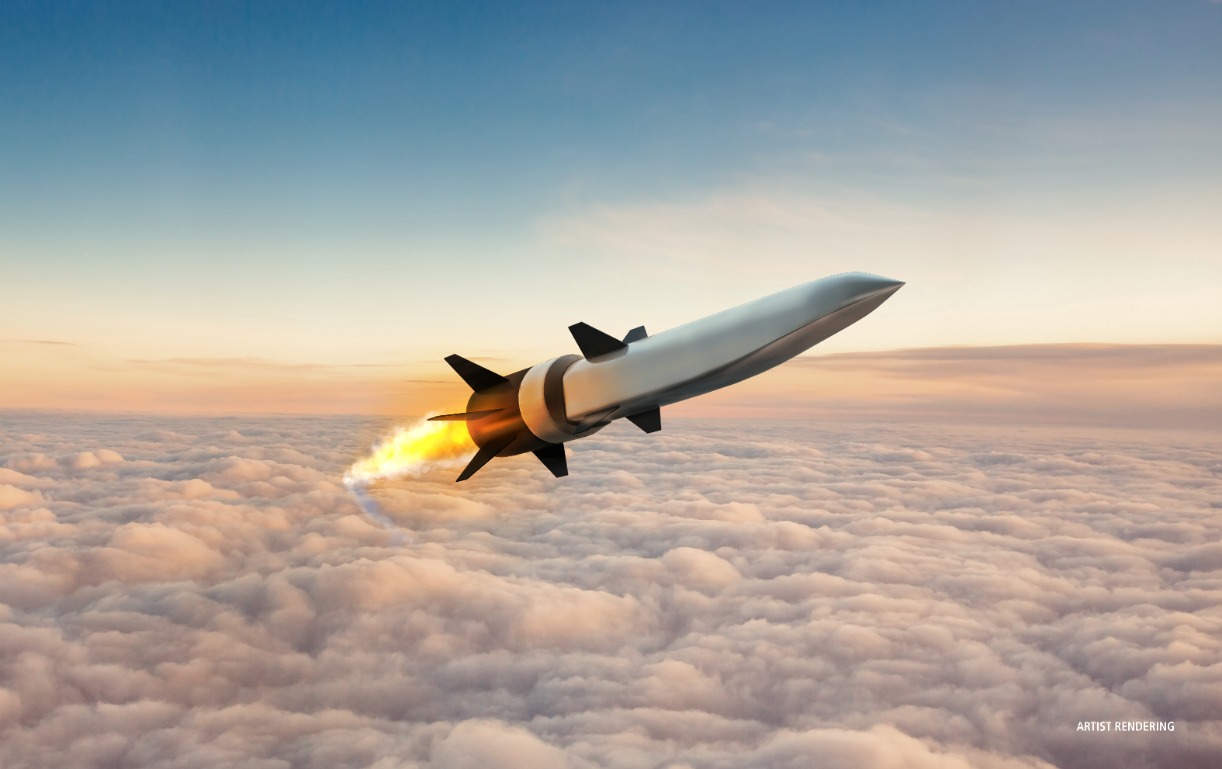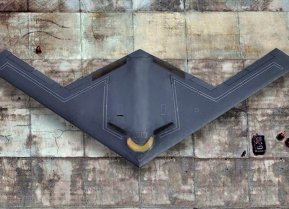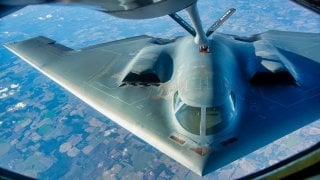China’s Hypersonic Missiles Are a Huge Threat to the U.S. Military
America’s inattentiveness to new military technologies and its policymakers' inability to imagine just what China might do with access to such technology has made America open to a potentially devastating hypersonic missile attack—the kind of attack that just might knock the Americans out of any Chinese war on Taiwan.
The Chinese military strategy for achieving dominance in the Indo-Pacific is simple: keep the U.S. military juggernaut back long enough to solidify China’s regional dominance, and to catch up technologically with the United States.
Once achieved, Beijing will solidify its newfound dominant position to crush potential challengers (like Australia, Japan, India, or Vietnam), and use the Indo-Pacific as a launching pad for pushing deeper into other parts of the world—notably the Western Hemisphere, America’s proverbial backyard.
One of the key technologies the People’s Liberation Army (PLA) is developing as part of its scheme for keeping the U.S. military back from what China views as its sphere of influence is hypersonic missiles.
In possession of the world’s largest, most sophisticated hypersonic wind tunnel, where China’s military is testing fully-built prototypes of its increasingly sophisticated hypersonic missiles at speeds reaching Mach 30, China is ahead of the Americans in the development of this key technology.
Yes, the United States Department of Defense (DOD) has announced some key strides that it’s made in the development of America’s own hypersonic missiles. But these developments continue to come a day late and a dollar short, considering how much farther along with hypersonic weapons deployment, not just development, China is compared to America.
China Has the Lead
At the same time that China has moved ahead of the Americans in the development of hypersonic weapons, the Americans have failed to develop and deploy adequate defenses against such systems.
As one senior Air Force officer, who is part of the mission to defend the U.S. homeland from possible missile attack, told me, “Hypersonics can outmatch anything we’ve got currently defending the homeland. And that should scare everyone.”
The United States needs to drastically and radically upgrade its national air defense systems to take into account the growing threat that Chinese-built hypersonic weapons pose – and will increasingly threaten the United States as the century progresses.
It is believed that a layered network of satellites and other sensors in the strategic high ground of space will be critical for tracking the launches of hypersonic weapons aimed at the United States or its assets elsewhere.
America Builds Its Defenses
For the last two years, the United States Space Force and the Missile Defense Agency (MDA) have worked in tandem to develop and deploy a constellation of satellites that will, in the words of a Pentagon press release on the matter, “demonstrate tracking and targeting to support hypersonic engagements. Those satellites will participate in flight tests and real-world threat collections throughout fiscal year 2024.”
The MDA has also partnered with the U.S. Navy to develop what they’re referring to as “sea-based terminal defenses to counter more advanced maneuvering and hypersonic threats.”

Specifically, the MDA wants to expand the Navy’s seaborne Aegis terminal defense, as Pentagon planners have identified the advanced weapons system that defends Aegis-class destroyers at sea as the best model for protecting against hypersonic weapon threats. MDA calls this program the “Aegis Glide Phase Interceptor Program.”
The glide phase refers to the point in a hypersonic vehicle’s trajectory when it is descending rapidly to its intended target from the atmosphere. In that period of time, it is believed that the hypersonic weapon can be identified by tracking systems and a time when that hypersonic weapon is most vulnerable to air defense systems.
The MDA and Navy believe this program will be fully armed and operational by 2025.
Incremental Reform Will Not Save Us
But these incremental advancements of U.S. anti-hypersonic weapons sensors continue to be insufficient, especially if China is readying to launch attacks on the United States far sooner than when the Pentagon assumes Beijing can conduct such attacks – in the run-up to a Chinese invasion or blockade of neighboring Taiwan.
Will the Chinese respectfully wait for the Pentagon’s upgrades to its defenses to be complete before they decide to launch a devastating attack on the Americans and/or their allies?
Unlikely.
The Pentagon has the right solution but, as always, they are moving far too slowly for my liking.
The truly tragic aspect of this story is not that China has out-innovated the Americans. It’s that China has taken a technology that the United States was familiar with for decades and simply poured more resources and time into the development of this technology than the Americans have.
This investment by China has created a critical vulnerability in the American defense network, to say nothing of the fact that the U.S. military currently lacks the ability to retaliate with similar weapons.
America’s inattentiveness to new military technologies and its policymakers' inability to imagine just what China might do with access to such technology has made America open to a potentially devastating attack—the kind of attack that just might knock the Americans out of any Chinese war on Taiwan.
China is Going to Strike Soon
The military has the right idea about how to build its own fleet of hypersonic weapons and how to better defend the homeland and other American assets abroad from hypersonic attacks.

But the slow-moving nature of these reforms means that America remains susceptible to these attacks with no real ability for retaliation.
China has married its capabilities—high technology, particularly in the hypersonic domain—with its overarching intention to reclaim Taiwan and knock the Americans out of the war – as well as to set the stage for the inevitable subordination of the United States under China’s new global empire, which China hopes to become by 2049.
Because of this, every American is at risk of suffering from a Chinese hypersonic weapon attack. China’s hypersonic threat to the United States is real and the country is vulnerable unless the government can more adequately fund the missions aimed at enhancing America’s hypersonic offensive and defensive capacities.
About the Author
Brandon J. Weichert is a former Congressional staffer and geopolitical analyst who is a contributor at The Washington Times, as well as at the Asia Times. He is the author of Winning Space: How America Remains a Superpower (Republic Book Publishers), Biohacked: China’s Race to Control Life (Encounter Books), and The Shadow War: Iran’s Quest for Supremacy (July 23). Weichert occasionally serves as a Subject Matter Expert for various organizations, including the Department of Defense. He can be followed via Twitter @WeTheBrandon.


